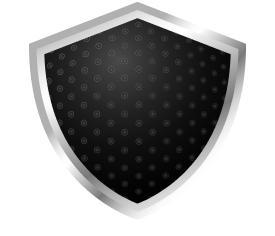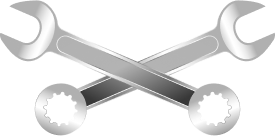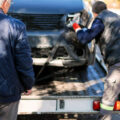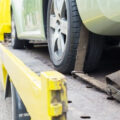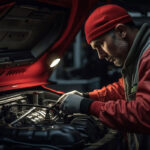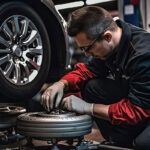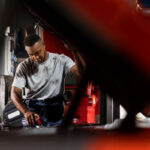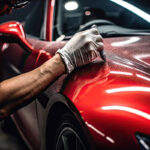Navigating the Collision Repair Process: What Every Driver Should Know
Accidents happen when we least expect them, and they can leave your vehicle with damages that affect both its appearance and functionality. Navigating the collision repair process can feel overwhelming, but understanding what to expect can make the experience smoother and more manageable. Here’s a comprehensive guide to help you through the collision repair process and ensure your vehicle is restored to its pre-accident condition.
Understanding Collision Repairs
Collision repairs address a wide range of damages caused by vehicle accidents. These services not only focus on restoring the aesthetic appeal of your car but also ensure its safety and functionality. Whether it’s fixing dents, replacing damaged panels, or repairing internal components, collision repair professionals work to restore your vehicle to its original specifications.
The Collision Repair Process
- Initial Assessment
After an accident, the first step is a thorough assessment of the damage. Professionals inspect the vehicle to identify visible and hidden issues. This step ensures that all aspects of the damage are accounted for before repairs begin. - Insurance Coordination
If the repair is covered by insurance, this is the stage where the repair shop communicates with your provider. A detailed estimate is created and shared with your insurance company to streamline the claims process. - Disassembly and Detailed Inspection
Sometimes, hidden damages are not apparent until the vehicle is disassembled. Technicians perform a more detailed inspection to uncover any structural or mechanical issues that need to be addressed. - Repair and Replacement
Skilled technicians use advanced tools and techniques to repair or replace damaged parts. This may include body panel replacements, structural realignments, or internal mechanical repairs. - Paint Matching and Repainting
To restore the vehicle’s aesthetic appeal, damaged areas are repainted with a perfect color match to blend seamlessly with the existing paint. Advanced technology ensures a flawless finish. - Reassembly and Quality Check
Once repairs are complete, the vehicle is reassembled, and a final quality check is performed to ensure everything is in perfect condition, both visually and functionally. - Final Inspection and Delivery
The vehicle undergoes a final inspection to confirm it meets safety standards and is ready for the road. It’s then returned to the owner in its restored state.
Benefits of Professional Collision Repairs
Investing in professional collision repairs provides a range of advantages:
- Enhanced Safety
Repairing structural damage ensures that your vehicle’s safety features, such as airbags and crumple zones, function properly in the event of future collisions. - Restored Aesthetic Appeal
Paint matching and precise bodywork ensure your vehicle looks as good as new, helping maintain its resale value. - Expert Craftsmanship
Certified technicians with years of experience handle your vehicle, ensuring high-quality results. - Preserved Vehicle Longevity
Addressing mechanical and structural issues promptly helps prevent further damage, extending the lifespan of your vehicle. - Insurance Support
Reputable repair shops work directly with your insurance company, simplifying the claims process and reducing your stress.
Who Can Benefit from Collision Repairs?
Collision repair services are ideal for:
- Drivers Involved in Accidents: Whether it’s a minor fender-bender or a major collision, these services restore your vehicle to its original condition.
- Owners Preparing for Resale: A repaired and well-maintained vehicle has higher resale value.
- Vehicles with Unseen Damage: Even minor accidents can cause hidden mechanical or structural damage that requires professional attention.
- Those Concerned About Safety: If your vehicle’s safety features have been compromised, collision repairs ensure they are fully functional again.
Frequently Asked Questions About Collision Repairs
1. How Long Does the Repair Process Take?
The timeline depends on the extent of the damage. Minor repairs can take a few days, while extensive structural repairs may require a couple of weeks.
2. Will Insurance Cover the Cost of Repairs?
Most insurance policies cover collision repairs. It’s best to consult your provider to understand your coverage and any potential out-of-pocket costs.
3. Can a Repaired Vehicle Look Like New Again?
Yes, with expert paint matching and bodywork, a professional collision repair service can restore your vehicle to its pre-accident appearance.
4. How Can I Ensure I’m Choosing a Reputable Repair Shop?
Look for a repair shop with certified technicians, state-of-the-art equipment, and excellent customer reviews.
Tips for Navigating the Collision Repair Process
- Document the Damage: Take photos of your vehicle after the accident for insurance purposes.
- Contact Your Insurance Provider: Notify your insurer promptly to initiate the claims process.
- Choose a Trusted Repair Shop: Select a reputable repair service with certified technicians and advanced tools.
- Ask Questions: Don’t hesitate to ask about the repair timeline, process, or any concerns you may have.
The Importance of Professional Collision Repairs
Entrusting your vehicle to a professional collision repair service ensures that every aspect of the damage is addressed with precision. From structural repairs to paint matching, expert technicians restore your car’s safety, appearance, and performance, providing peace of mind and a stress-free experience.
Get Back on the Road with Confidence
If you’ve been in an accident, don’t let the repair process overwhelm you. A professional collision repair service can guide you every step of the way, ensuring your vehicle is restored to its former glory. Contact a trusted repair provider today to schedule a consultation and take the first step toward getting back on the road with safety and style!
